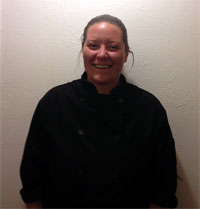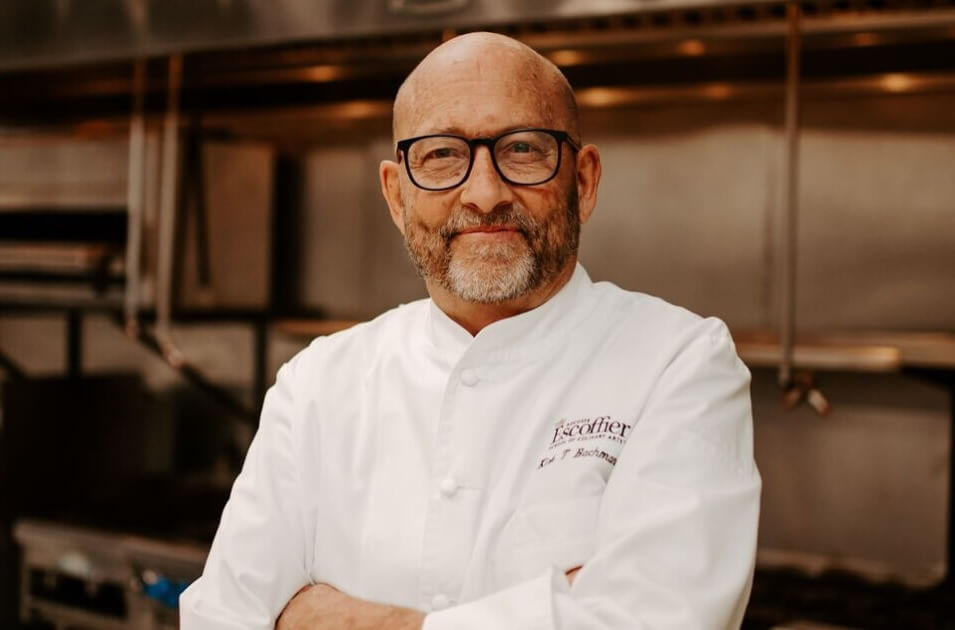Listen to This Article:
French cooking is considered by many to be the most prestigious and respectable cuisine in the world. With its formal techniques, emphasis on fresh ingredients and simple flavors, pride in presentation, and rich and colorful history, French cuisine truly has come to rule the world, laying the foundations for many other styles and specialties.
To become a skilled chef, you must have extensive knowledge of French cooking fundamentals.
But how did French cuisine come to be so acclaimed? Let’s explore the many ways French cuisine has impacted food and culture around the world.
Modern French Cuisine Is a Potpourri of Influences
The quintessential French cuisine we know and love today did not suddenly arrive but evolved over centuries from many influences. From the traditional use of local, abundant ingredients to the changing tides of politics and royal intermarriages, the story of how modern French cuisine evolved spans continents and includes trade routes, colonial escapades, and the interests of the aristocracy.
The Celtic Foundations of French Cooking
The indigenous people of ancient Gaul, which includes current-day France, were Celts. The Celts were adept at fermentation and the use of herbs and spices, and these skills gave rise to one of the most essential of French ingredients: wine. Without the efforts of the Celts, we might not enjoy French dishes like coq au vin or beouf bourguignon.
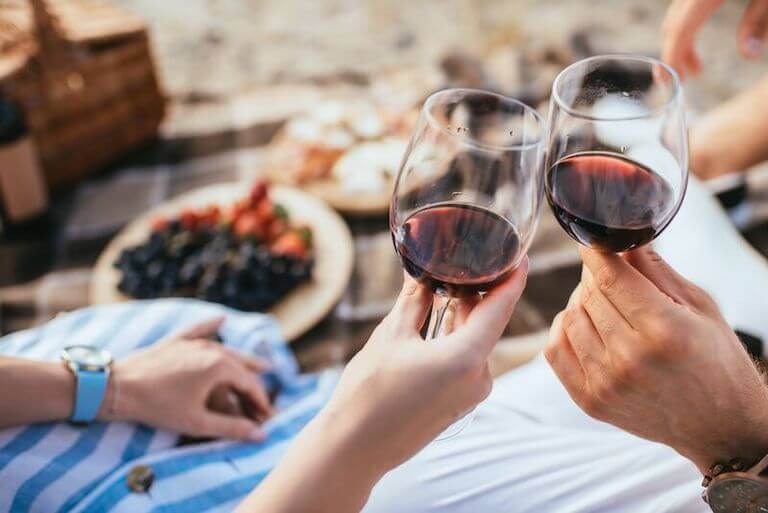
Without the wine-making skills of the ancient Celts, French cooking would have a very different flavor.
Roman Colonization Brought Lasting Influences on French Cuisine
During the 600 years of Rome’s rule over Gaul, the Romans brought their culture with them. Ingredients such as olive oil and garlic became integrated into the local customs. Even more importantly for French cuisine, the Romans brought meat preservation techniques like salting and curing, setting the stage for charcuterie.
Medieval French Cooking Seasoned with Asian and Middle Eastern Flavors
During medieval times, nobility dined on multi-course meals composed of local wild game, meat, fruit, and grains, often prepared with heavy sauces. New ingredients from far and middle east trade, like saffron, ginger, and cinnamon, began to find their way into the kitchens of the elite.
The nobility often utilized these seasonal and exotic ingredients to host banquets that showed off their wealth. The feast hosts elaborately presented their dishes to impress guests. This emphasis on high-class food presentation in the Middle Ages is thought to be the beginning of the French attention to artful plating.
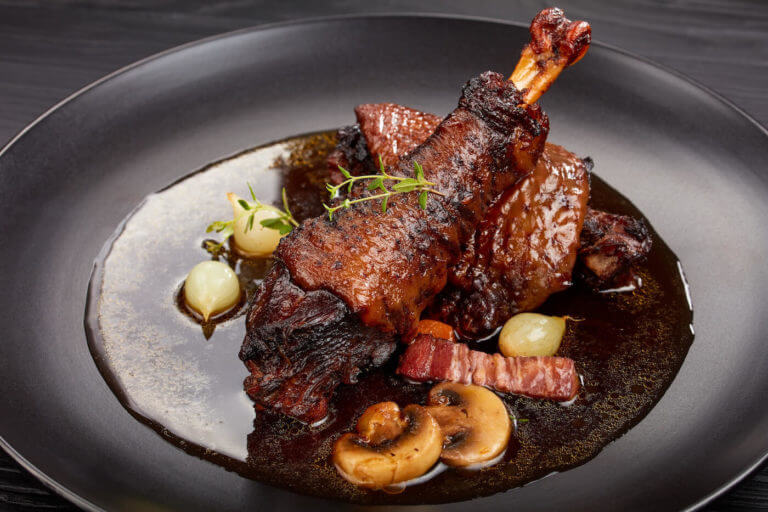
Artful plating and delicate sauces are a hallmark of modern French cuisine.
Renaissance-Era Italian Chefs Brought New Techniques to French Cuisine
Italian noblewoman Catherine de Medici married French King Henry II in 1547. When Catherine came to France, she brought not only her kitchen staff but new Renaissance culinary traditions with her from her Italian homeland. She is credited with bringing the use of tomatoes and pasta to France. At Catherine’s banquets of the era, chefs began to focus more on aesthetics, flavor, and presentation. They also incorporated new-world ingredients like turkeys and beans that were sourced from France’s new colonial territories. Meanwhile, colonial exploits brought other new flavors back to France, like the mango. Mango sorbet became a popular treat for the French people.
How Modern French Cuisine Evolved
Each of these historical eras set the stage for modern French cuisine.
But it was Francois Pierre La Varenne, who published the first French cookbook in 1651 titled Le Cuisinier Francois, who is credited with the birth of French cooking La Varenne’s complex sauces and unique cooking techniques took the cuisine to new levels, while his cookbook allowed others to try to replicate his recipes.
At the same time, as the French colonized other countries – including parts of Asia, Africa, North America, and the Caribbean – throughout the 1700s and 1800s, they integrated new flavors and ingredients from around the world.
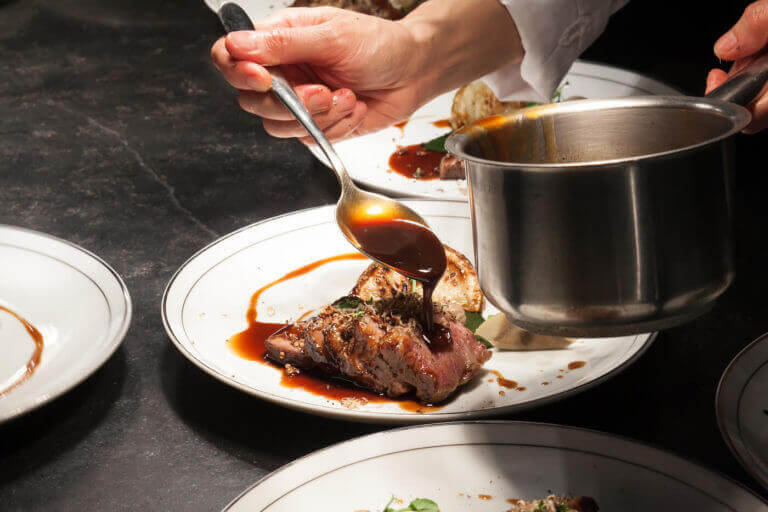
Sauces made with complex techniques are one of the defining features of French cuisine entrées.
What Is Haute Cuisine?
If you’ve studied French cuisine at all, you’ve probably heard of something called haute cuisine.
Haute cuisine translates to “high cuisine” and refers to a shift in French cooking from an emphasis on abundance and quantity to an emphasis on moderation and quality. Marie-Antoine Carême is often credited with leading this charge in the 1800s. He taught French cooking as a sophisticated art form that required technique and precision, and his recipe manuals made French cuisine more accessible.
Georges Auguste Escoffier, known as the King of Chefs and Chef of Kings and our school’s namesake, brought haute cuisine to the modern world. He revolutionized the fundamentals of French cooking including how food is presented and how it’s served. With his publication of Le Guide Culinaire in 1903, Escoffier adapted haute cuisine to be more modern.
Additionally, Escoffier furthered the culinary profession through an organized and smoothly-running professional kitchen with his innovative brigade de cuisine system, which features a strong organizational system and hierarchy. This system modernized the culinary arts, giving kitchens a military-style ethic to deliver efficient and effective service under strong leadership. The brigade system is still used in kitchens around the world today.
Nouvelle Cuisine
French cooking continued to evolve and in the 1900s, nouvelle cuisine was born. This style of cooking was defined by the use of high-quality, fresh ingredients; lighter meals; and simpler yet breathtaking presentations. Modern French cooking draws inspiration from the many cooking concepts French chefs have developed and presented over centuries.
In the 1960s, American chef Julia Child brought this nouvelle cuisine to everyday cooks with her landmark Mastering the Art of French Cooking cookbook, and her subsequent television series The French Chef. As Julia demonstrated how to make classics like crème brulée and ratatouille, she allowed everyday people to explore the joys of flavor and presentation that define French cuisine.
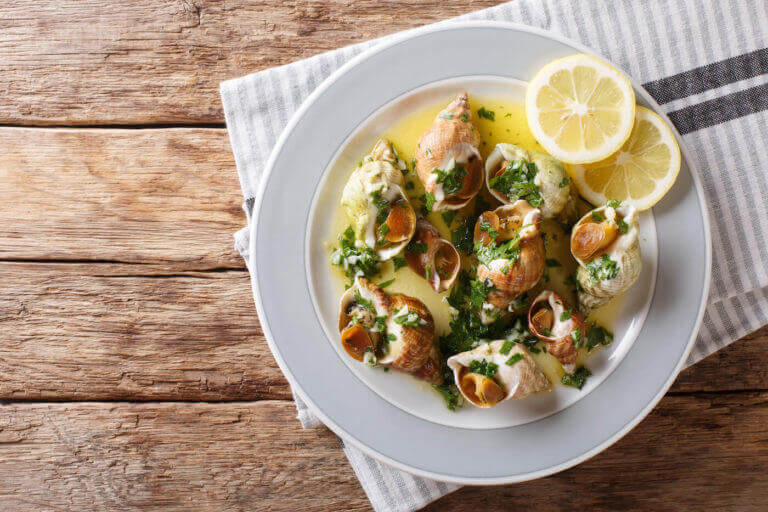
Refined dishes like escargot define French cuisine.
French Cuisine Influences on Other Gastronomies
Since the early 1900s, modern French cuisine has been considered the height of style and influence when it comes to food. But in places where the French created colonies, the original inhabitants often blended their local cuisine with the new French influence with some interesting results. Here are a few examples.
Louisiana Creole
In the bayous of Louisiana, a melting pot of African, American, Caribbean, Spanish, and French people created a unique cuisine, called “Creole.” When it comes to cuisine, creole simply means fusion. In Louisiana, a combination of local seafood, spicy flavor profiles, and French cooking techniques creates a unique and enticing dining experience for travelers.
Creole Cuisine in Réunion
Réunion is an island French territory near Madagascar in the Indian Ocean. Influenced by African, Indian, and Chinese people as well as French colonists, the Réunion creole blends French cooking techniques with Asian and African ingredients.
The Foundations of French Cooking
French cooking is incredibly complex and is built upon many years of history. Still, most chefs would agree that technique, ingredients, and the dining experience are important components of this cuisine.
Technique
French cooking techniques require patience, skill, and attention to detail. These take years to perfect but should be studied by all aspiring chefs.
Mise en Place
Mise en place means “everything in its place,” and it’s a key component of kitchen organization. Before cooking a dish, a chef organizes their tools and prepares, cuts, and measures their ingredients. Everything should be close at hand and ready to go when it’s time to cook. A chef must be mentally prepared to execute the techniques to create masterpieces!
Sauté
Sauteeing is a technique of cooking ingredients in a pan coated with olive oil or butter over medium to high heat. To sauter means “to jump” in French, which is what ingredients do in a hot pan. One classic dish that relies on this technique is lamb chasseur.
Braise
Braising is a combination cooking method used to cook meat or vegetables in a covered pot over low heat until the products are tender. Chefs typically sear the surface of meat or vegetables at high temperatures then lower the heat. Next, the ingredients slowly cook in fat, stock, or wine to produce complex flavors along with soft and tender bites.
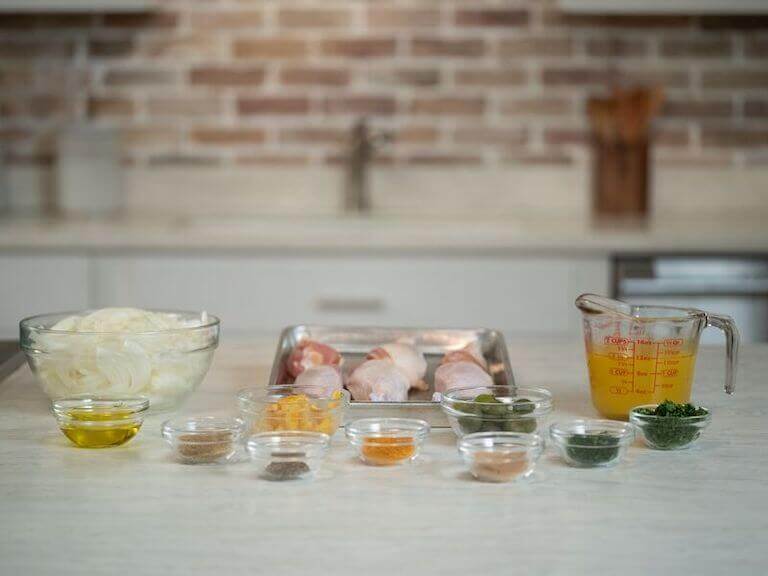
Mise en place is a French cooking preparation technique, where the chef preps and assembles all the needed ingredients before beginning to cook.
Confit
To confit an ingredient requires salting and cooking the product in fat. Traditionally, this technique was used to preserve meat. Duck confit is a classic French dish that uses this method. However, you can also confit many vegetables such as garlic or potatoes!
Flambé
Flambé involves the use of flammable alcohol to make desserts such as cherries jubilee. When the alcohol is set on fire or flambéed, it burns the alcohol away in mere seconds while leaving the aroma of the liquor’s main flavor. For many years, restaurants would flambé various dishes tableside to highlight both the technique and enhance the dining experience for their guests!
Ingredients
Another marker of French cuisine that differentiates it from others is the use of high-quality ingredients.
French dishes often use simple ingredients transformed by artful techniques. Fresh, naturally produced ingredients can always be found in French cuisine. Wine, cheese, olive oil, and seasonal vegetables are just a few staples.
Herbs and spices are also important to French cuisine and can contribute a depth of flavor to otherwise subtle dishes. A few commonly used in French dishes include herbs de Provence, tarragon, and nutmeg.
Students at Auguste Escoffier School of Culinary Arts could gain experience connecting with local farmers and cooking with fresh ingredients in the French style during our Farm To Table® Experience. They may chat about production methods, see where their food comes from, and even taste ingredients straight from their source!*
*Information may not reflect every student’s experience. Results and outcomes may be based on several factors, such as geographical region or previous experience.
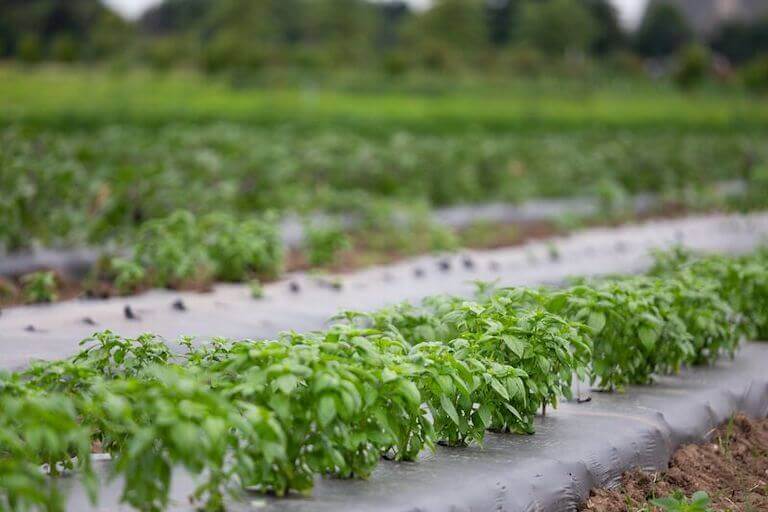
Farm-fresh ingredients are an important part of creating exceptional flavor in French cooking.
Dining Experience
Another foundation of French cuisine is the dining experience, which requires careful presentation, elegance, and community when eating. A version of this could be seen all the way back in the Middle Ages at the banquets held by the aristocracy, but French cooking underwent many changes to end up where it is today.
With the rise of haute cuisine, meals became smaller and presentations became more detailed and elegant. Nouvelle cuisine placed even greater emphasis on precision in presentation. Today, many chefs in fine dining restaurants are as talented at presenting their food as they are at preparing it!
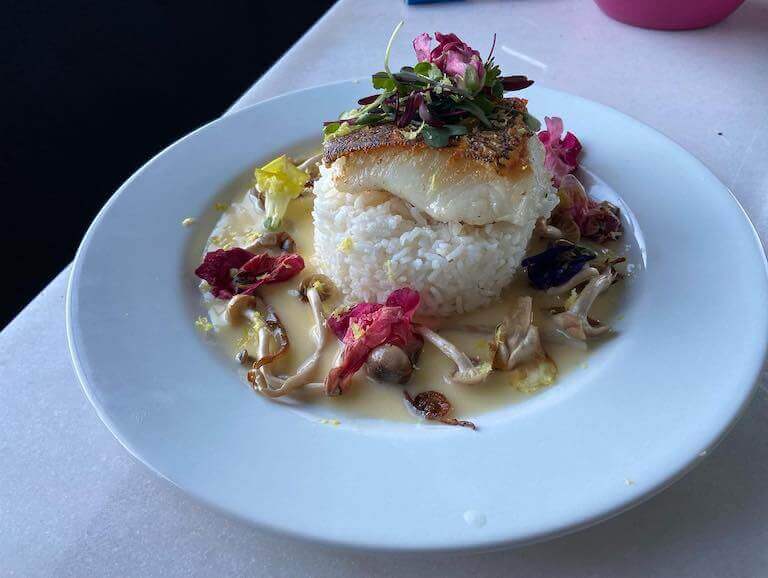
A beautifully plated Chilean sea bass dish by Escoffier graduate William Raheem.
A sense of community can still be felt in many classic French restaurants, which sometimes utilize banquet-style seating to bring guests together.
The Art of French Cooking and More
To become a great chef, one must be equipped with skills and techniques from different cultures and regions. However, French cooking inspires many types of cuisine and forms the foundation of fine dining.
At Escoffier, we honor the countless contributions of Auguste Escoffier by exploring French techniques and an appreciation for great ingredients. If you’d like to improve your culinary skills from some of the best Chef Instructors, learn more about our culinary and pastry degrees and diplomas.
INTERESTED IN READING MORE WORLD OF FOOD AND DRINK ARTICLES? TRY THESE NEXT:
- A Brief History of The Michelin Star Rating
- A Brief History of The Chef’s Uniform
- Why Study at a French Culinary Institute?
*Information may not reflect every student’s experience. Results and outcomes may be based on several factors, such as geographical region or previous experience.
This article was originally published on April 28, 2021 and has since been updated


